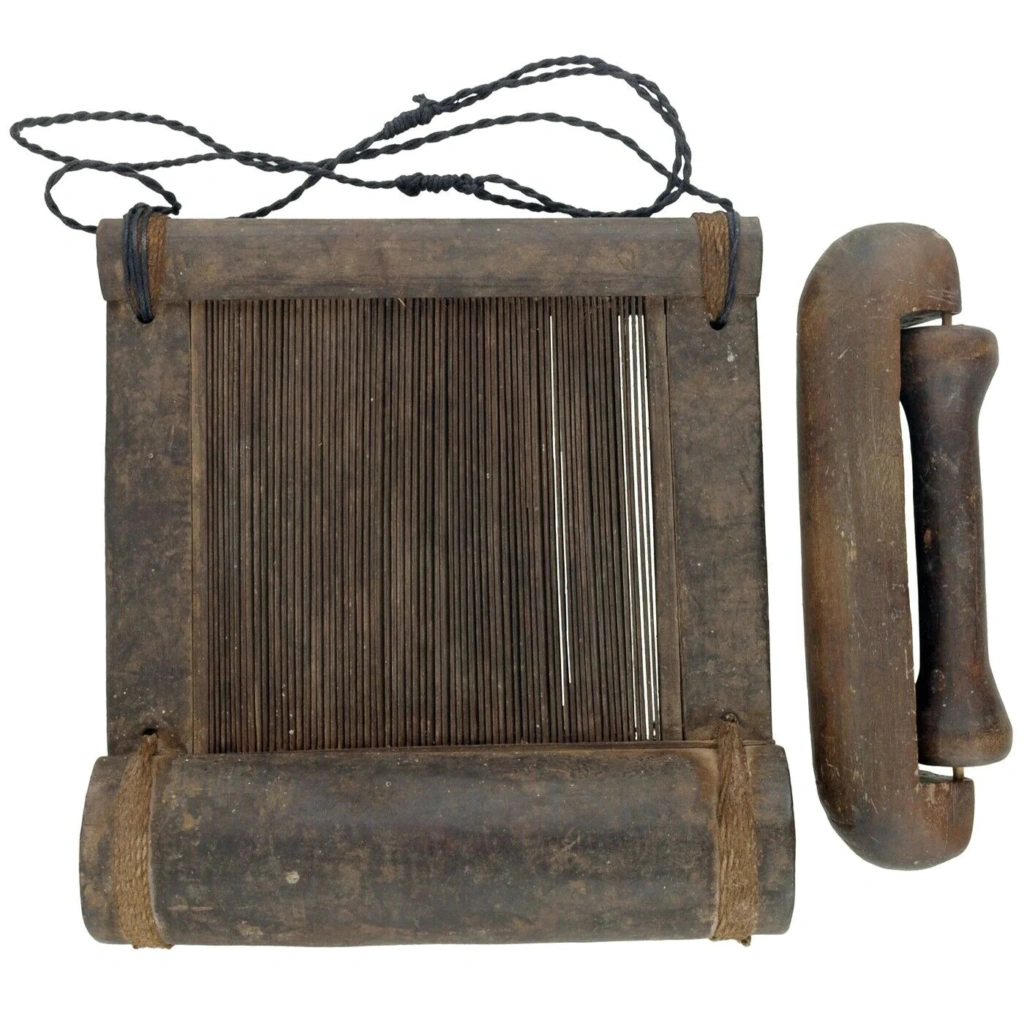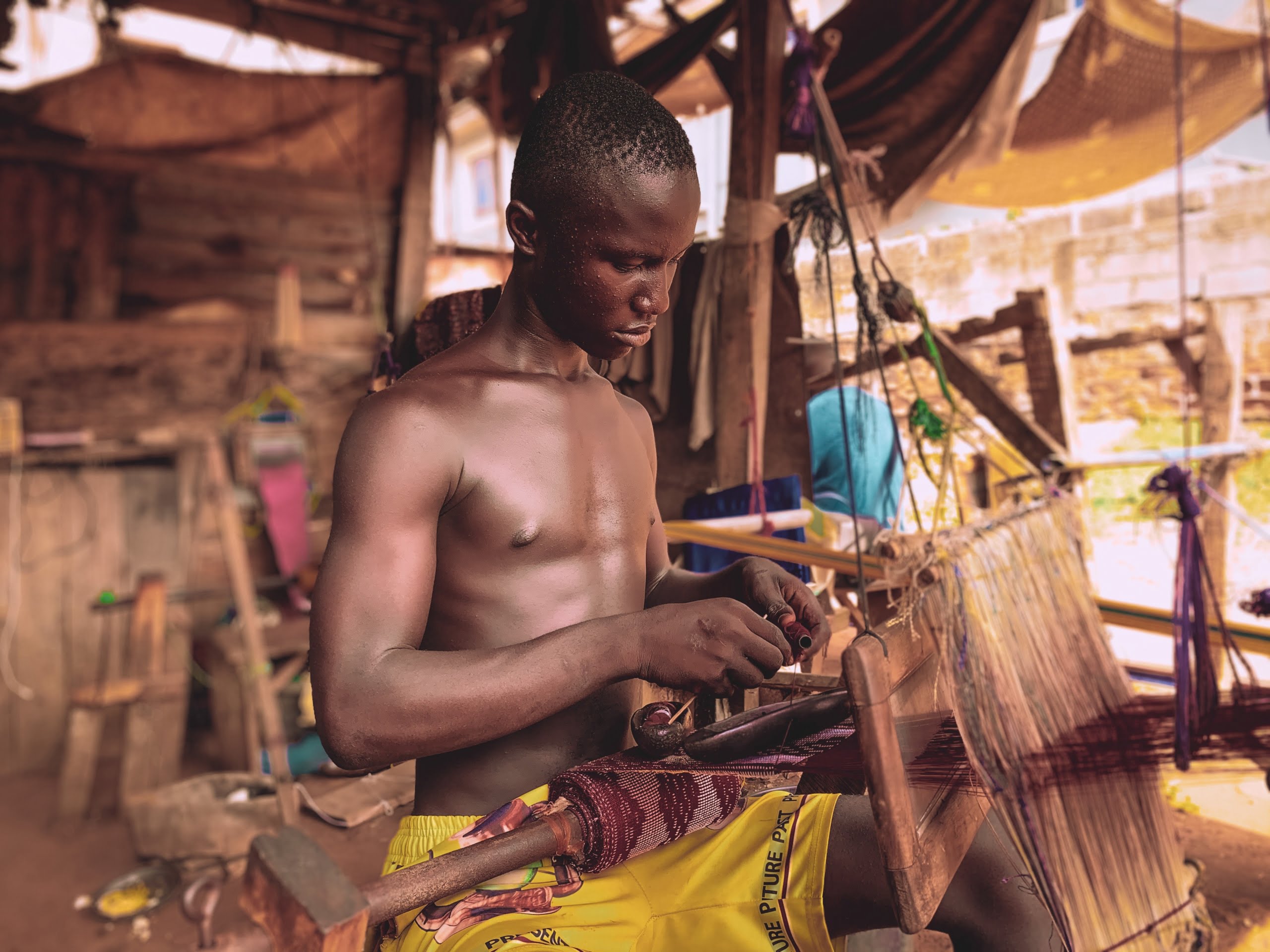© Hinkro Kente 2025. All right reserved. Terms and Privacy.
Built and managed by Nusite IT Consulting Limited

Kente weaving is a traditional cultural art that has been practiced by the Asante people of Ghana since the 17th Century. Kente weaving is a textile production technique whereby narrow loom is use to produce long and narrow strips of cloth, which may then be joined edge to edge to create square or rectangular cover cloths. The technique offers endless possibilities for variations of scale and composition . Kente is a rare instructional resource that adds quality to the teaching and learning of the elements and principles of design, colour symbolism.
At Hinkro here we have a unique way we also produce our kente fabrics. The Kente is woven on a horizontal strip loom, which produces a narrow band of cloth about four inches wide. Several of these strips are carefully arranged and hand-sewn together to create a cloth of the desired size. Most kente weavers are men. Historically, when kente was used solely for royal courts or prestigious occasions, the strips were made of silk; today you’ll also find kente made of cotton or rayon blends. A tell-tale identifier of kente cloth is its vertical strips of fabric, which are typically four inches wide.

These strips are then cut and sewn together to create larger swaths which can be worn on the body. By placing blocks of pattern next to one another, a meaning for the whole piece emerges. Although weaving kente is traditionally men’s work, it is common to see both men and women donning these beautiful, wearable artworks.
Kente weaving involves no drafting yet generates highly creative designs on the traditional narrow loom which come up very strongly and enabled in-depth discussion of how abstract ideas could be expressed as a tangible structure on point paper.
In the past locally grown cotton has been spun and dyed with naturally occurring local materials but in recent times imported yarn has overtaken the local yarn as the major raw material for kente weaving. Commonly used material include rayon, silk and metallic yarn which gives the final product a shimmery finish.
Our authentic Kente cloth is hand woven by indigenously experienced weavers on narrow traditional loom with the indigenous warp of preparatory qualities, and woven in strips measuring approximately 4 inches wide and 144 inches long (10cm x 360cm) for a male cloth and 4 inches x 72 inches (10cm x 180cm) for a female cloth, in two or more colours . Each strip has an open border design that is followed by the main cloth design and a close-end border design as shown in Plate 1. In effect, the main cloth design is sandwiched between two end designs. production of the Kente cloth takes a long time, which makes it very rich in quality and in expensive taste.
Check our bespoke page for more insight on how our kente cloths are made and services rendered to match your taste.

